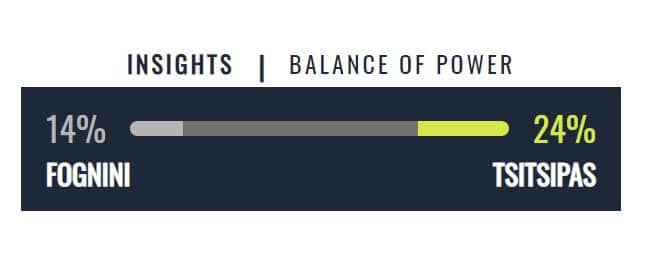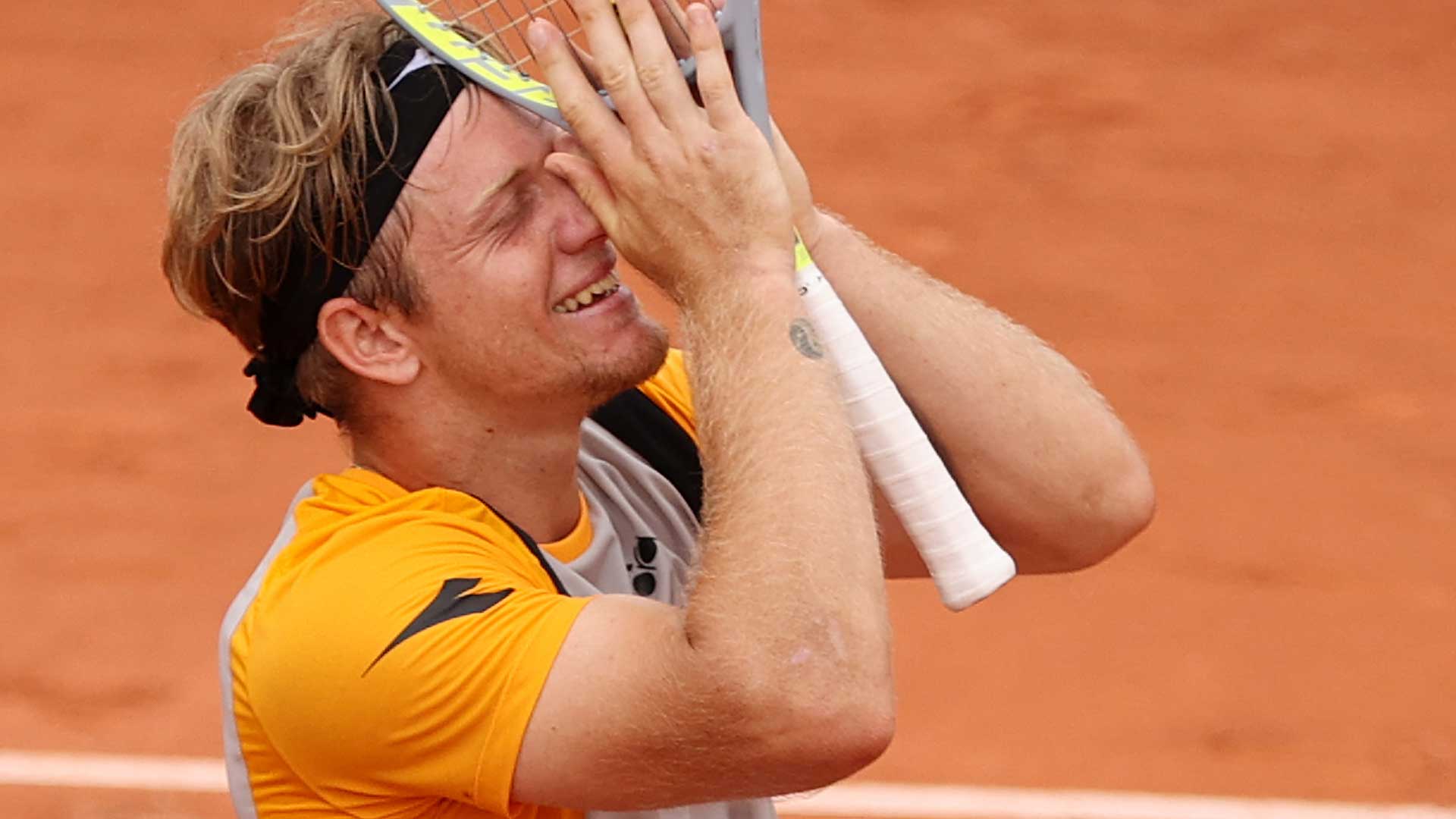Wednesday’s play at the Rolex Monte-Carlo Masters will whittle the men’s singles draw down to the last 16, with a star-studded lineup set to grace the red clay courts in Monaco.
Carlos Alcaraz will make his debut at the ATP Masters 1000 event, fresh off his first title at that level in Miami. The Spaniard will open play on Court Rainier III, with Casper Ruud, Felix Auger-Aliassime and Alexander Zverev to follow. Four more Top 10 seeds headline the action on Court Des Princes.
View Schedule | View Singles Draw | View Doubles Draw
[8] Carlos Alcaraz (ESP) vs. Sebastian Korda (USA)
Alcaraz’s scintillating 10-1 run in Indian Wells and Miami left many wondering if hard courts may be his best surface. But the 18-year-old grew up on clay courts in Spain, and already has two clay titles to his name in Umag and Rio de Janeiro.
Entering Monte Carlo at a career-high ATP Ranking of No. 11, Alcaraz has a chance to once again showcase his prowess on the dirt.
“I’m so excited to play after the Masters 1000 in Miami,” he said after arriving in Monaco for the first time. “I’m really excited to play on clay and really excited to play in front of the Monte Carlo crowd.”
He will face a tough opening test against 21-year-old Sebastian Korda, who pushed Rafael Nadal to a third-set tie-break in Indian Wells. The World No. 42 American knocked off Botic van de Zandschulp, 7-5, 6-4, in the Monte Carlo first round.
Their Wednesday meeting is a rematch of the 2021 Intesa Sanpaolo Next Gen ATP Finals championship match, which Alcaraz won in straight sets. But despite his growing trophy collection, Alcaraz remains grounded.
“I will always be the same person. l will never change,” he said in a pre-tournament interview. “I’ll just be confident, of course, doing the selifes, doing autographs and everything. But I will be always the same person.”
(6) Felix Auger-Aliassime (CAN) vs. Lorenzo Musetti (ITA)
Two more youngsters will battle it out on the Monte Carlo show court as the 21-year-old Felix Auger-Aliassime takes on 20-year-old #NextGenATP star Lorenzo Musetti. The pair split their previous two ATPHead2Head meetings, with both matches requiring three sets during the European clay swing in 2021.
After reaching the Australian Open quarter-finals and taking a two-set lead against Daniil Medvedev, Auger-Aliassime had a career month in February. He followed up his first ATP Tour title in Rotterdam by reaching the Marseille final, but slumped to two first-round exits at the March Masters 1000s. The Canadian will look to recapture his early-season form in Monte Carlo, where he has one win in three appearances.
“I feel good. I know the things I could have done better in those matches that I’ve lost,” he said, reflecting on his recent performances. “I feel like overall my tennis is improving. I’m figuring out myself more and more, becoming a better player… I’m confident I can play well on this clay swing.”
Musetti picked up his first Monte Carlo victory in a 6-2, 6-7(4), 6-2 result over Benoit Paire on Tuesday. The World No. 83 is making his second appearance in Monaco.
(2) Alexander Zverev (GER) vs. Federico Delbonis (ARG)
Alexander Zverev has won three clay-court ATP Masters 1000 titles and reached the Monte Carlo semi-finals in 2018, but has not been beyond the last 16 since in Monaco. The World No. 3 and two-time Nitto ATP Finals champion reached the Miami quarter-finals in his last appearance, and counts a run to the Montpellier final as his best result on the season.
Federico Delbonis ended a five-match losing streak by beating Jaume Munar, 6-4, 3-6, 6-4 on Monday and will seek his first victory against the German on Wednesday. Zverev leads the pair’s ATPHead2Head series 2-0, with both matches coming on clay in 2019.
FOLLOW THIS WEEK’S ACTION
📺 TV Schedule
🎾 Watch Live On Tennis TV
📱 Follow Live Scores On ATP Tour App
📧 Sign Up For Newsletters
Best Of The Rest
With eight of the tournament’s Top 10 seeds in action Wednesday, there’s no shortage of star power. The only Top 10 seeds not in action are Stefanos Tsitsipas (through to the last 16 after a 6-3, 6-0 win over Fabio Fognini) and Novak Djokovic (eliminated by Alejandro Davidovich Fokina).
Rounding out the play on Court Rainier III is fourth seed Casper Ruud’s matchup with Danish qualifier and #NextGenATP contender Holger Rune.
Court Des Princes will feature Andrey Rublev, Cameron Norrie, Taylor Fritz and Jannik Sinner, with Rublev taking on Alex de Minaur in the evening’s final match.
Three doubles matches complete the Day 4 slate, with second seeds Nikola Mektic and Mate Pavic set to take on Tsitsipas and brother Petros Tsitsipas on Court 2 after three singles matches.

SCHEDULE – WEDNESDAY, APRIL 12
COURT RAINIER III start 11:00 a.m.
[8] C. Alcaraz (ESP) vs. S. Korda (USA)
[4] C. Ruud (NOR) vs. [Q] Holger Rune (DEN)
[6] F. Auger-Aliassime (CAN) vs. L. Musetti (ITA)
[2] A. Zverev (GER) vs. F. Delbonis (ARG)
COURT DES PRINCES start 11:00 a.m.
[7] C. Norrie (GBR) vs. A. Ramos-Vinolas (ESP)
[10] T. Fritz (USA) vs. M. Cilic (CRO)
[9] J. Sinner (ITA) vs. [Q] E. Ruusuvuori
[5] A. Rublev vs. A. de Minaur (AUS)
COURT 2 start 11:00 a.m.
[16] L. Sonego vs. L. Djere (SRB)
D. Evans (GBR) vs. [WC] D. Goffin (BEL)
[12] D. Schwartzman (ARG) vs. M. Fucsovics (HUN)
[2] N. Mektic (CRO) / M. Pavic (CRO) vs. P. Tsitsipas (GRE) / S. Tsitsipas (GRE)
COURT 9 start 11:00 a.m.
[6] J. Cabal (COL) / R. Farah (COL) vs. S. Gonzalez (MEX) / A. Molteni (ARG)
[11] H. Hurkacz (POL) vs. P. Martinez (ESP)
[13] P. Carreno Busta (ESP) vs. A. Bublik (KAZ)
COURT 11 start 2:00 p.m.
[5] T. Puetz (GER) / M. Venus (AUS) vs. A. Karatsev / J. Peers (AUS)




